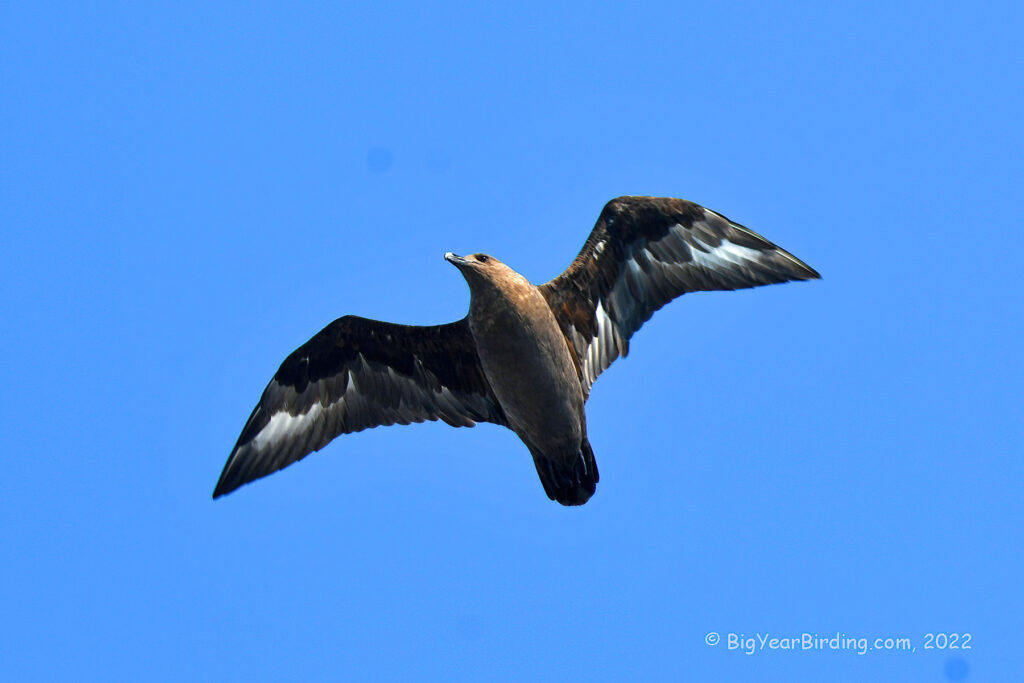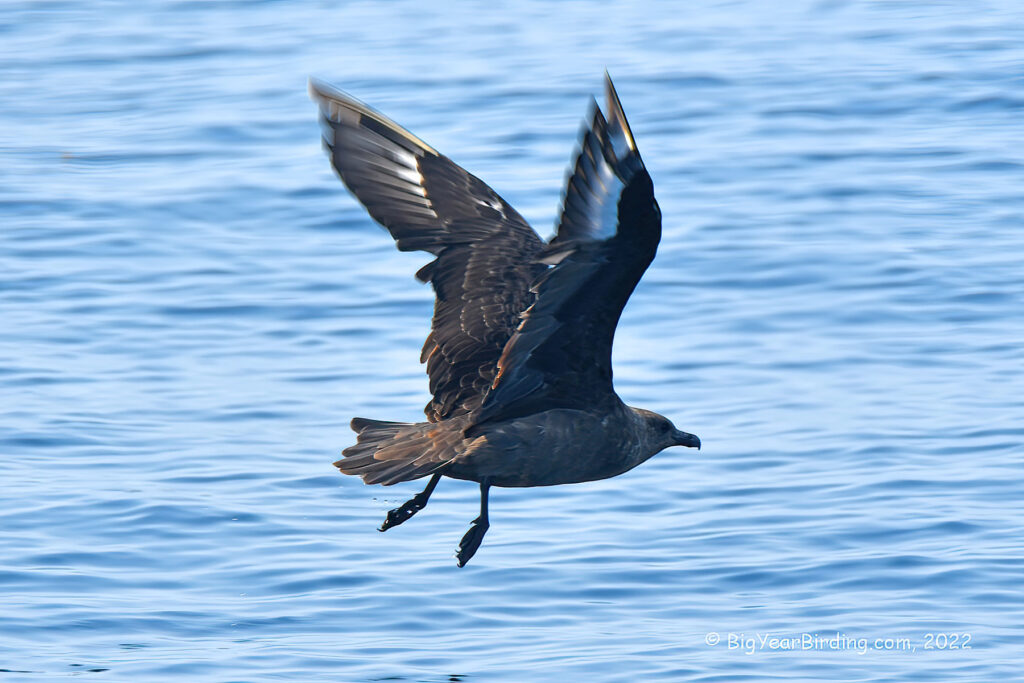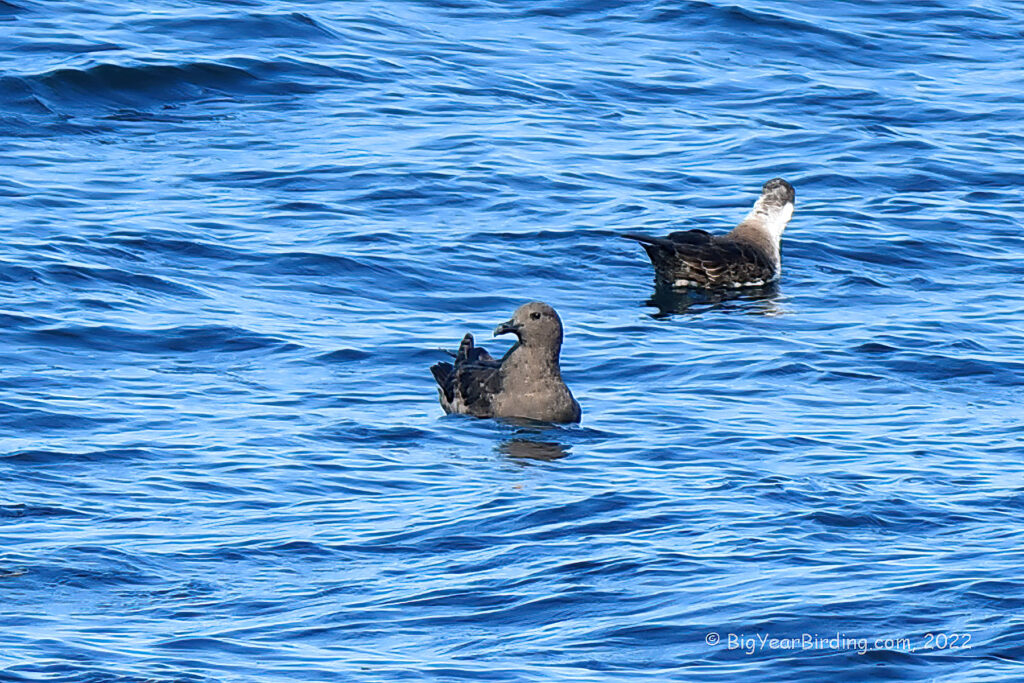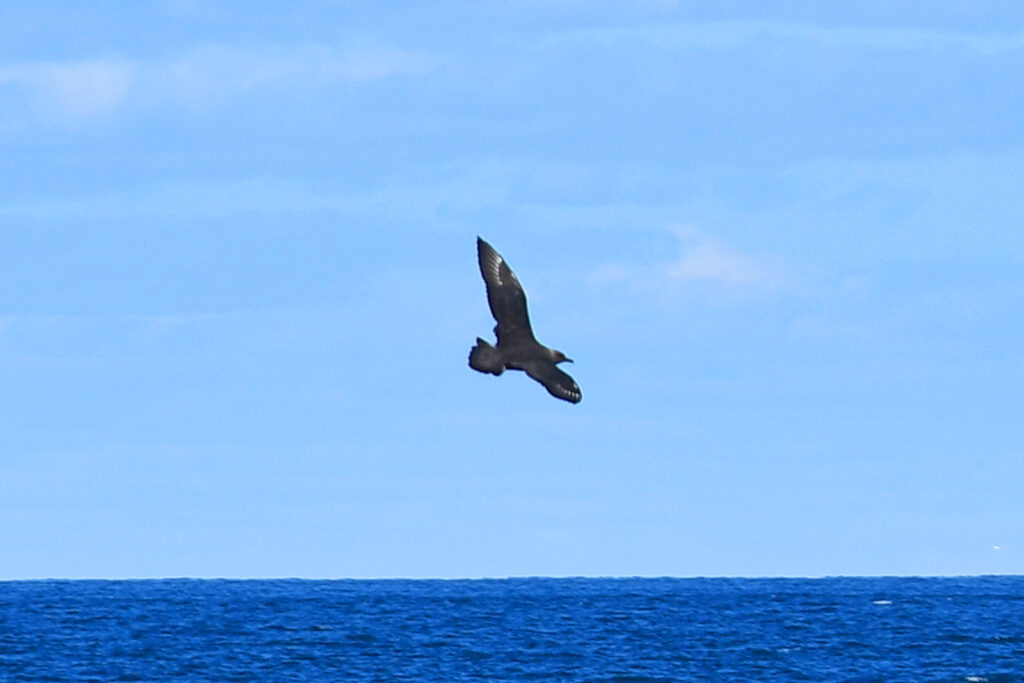
The South Polar Skua, also known as the Antarctic Skua, is a large seabird that inhabits the Antarctic and sub-Antarctic regions. These birds measure around 24 to 30 inches in length and weigh between 2.6 and 4.4 pounds. They have a wingspan of approximately 59 inches. South Polar Skuas are known for their aggressive and predatory behavior towards other birds, often stealing food from other birds such as penguins and petrels.

South Polar Skuas have distinguishing field marks, such as their dark brown plumage and white wing patches, which make them easily identifiable. These birds have a hooked beak, which they use to tear apart their prey. Their feet are webbed and strong, allowing them to swim in the frigid waters of the Antarctic. Juvenile South Polar Skuas have a mottled brown plumage with white streaks, which makes them distinguishable from adults.
South Polar Skuas are migratory birds that breed in the Antarctic summer, between November and January. After breeding, they migrate northwards to warmer waters, where they spend the winter months. During the breeding season, they build their nests on rocky areas, laying one or two eggs. Both parents take turns incubating the eggs and feeding the chicks until they fledge and become independent.
Despite being widespread in the Antarctic, South Polar Skuas face threats such as climate change, pollution, and habitat destruction. As predators, they are also susceptible to bioaccumulation of toxins, which can impact their health and reproduction. Conservation efforts, such as monitoring and reducing human impacts on the Antarctic environment, can help protect these birds and their habitats.

In conclusion, the South Polar Skua is a remarkable bird that has adapted to life in the harsh Antarctic environment. Their aggressive behavior and predatory nature make them a unique species in the region, and their migratory patterns show their resilience in the face of changing environmental conditions. However, their survival is threatened by human activities, making it crucial to take measures to protect them and their habitats.

